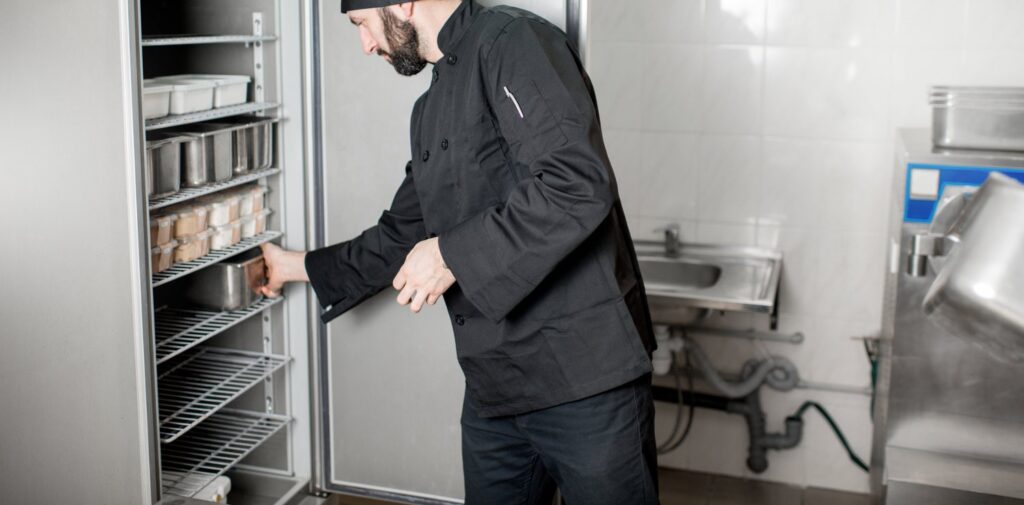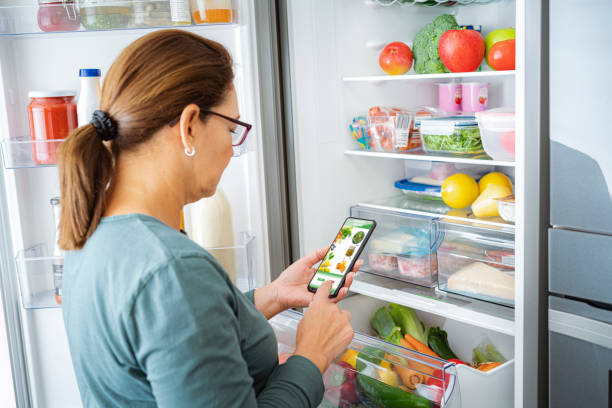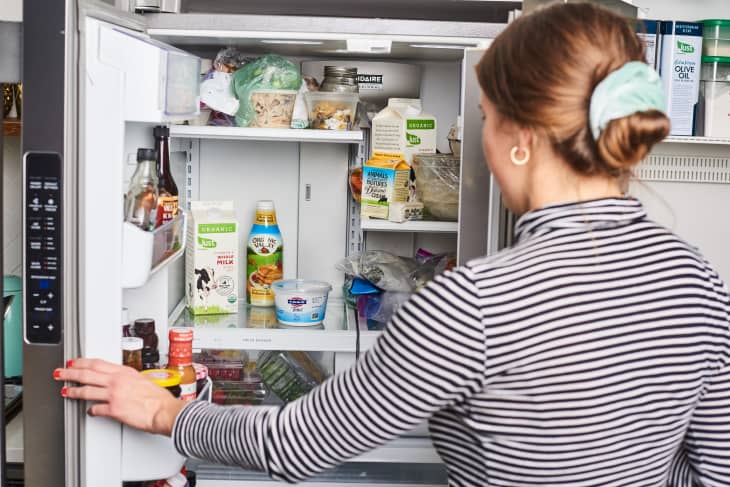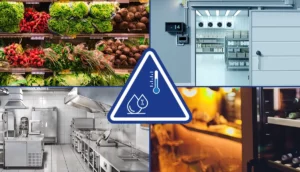Fridge Monitoring Systems: Keeping Food Safe and Fresh
What Are Fridge Monitoring Systems and How Do They Work?
Fridge monitoring systems are digital solutions designed to automatically track and record temperature conditions within refrigeration units. These systems serve a critical purpose: ensuring your food remains safe for consumption whilst maintaining optimal freshness throughout the storage period.
Temperature control is essential for effective food safety management. By keeping refrigeration temperatures consistent, you create an environment that slows down bacterial growth and preserves the nutritional quality of perishable items. This controlled environment is your first line of defence against foodborne illnesses and costly food spoilage.
Key Components of Modern Fridge Monitoring Systems
Modern fridge monitoring systems consist of several key components working together to ensure food safety and regulatory compliance. These include:
- Wireless sensors that continuously measure temperature conditions
- Software platforms that collect and analyse temperature data
- Alert systems that notify you of temperature deviations
- Data logging capabilities for compliance documentation
By integrating these elements, fridge monitoring systems provide reliable oversight and help maintain consistent storage conditions.
How Fridge Monitoring Systems Work
The continuous temperature tracking process operates through strategically placed sensors within your refrigeration units. Here’s how it works:
- Measurement: Wireless sensors measure the temperature inside the fridge or freezer.
- Transmission: The sensors transmit real-time temperature data to cloud-based software platforms.
- Recording: The software platforms create an uninterrupted stream of temperature data recording.
- Analysis: The software analyses the temperature data to identify any deviations from predetermined safe ranges.
- Notification: If temperatures drift outside the safe ranges, you receive instant notifications.
- Action: You can take immediate corrective action based on the notifications received.
This automated approach replaces traditional manual temperature checking with a sophisticated, reliable system that operates 24/7. It ensures your food safety protocols remain consistently effective.

Why Is Temperature Control Critical for Food Safety?
Temperature control food safety is essential to prevent dangerous bacterial growth in your refrigerated products. Harmful bacteria such as Salmonella, E. coli, and Listeria multiply quickly when food temperatures rise above 4°C, doubling their population every 20 minutes in the danger zone between 4°C and 60°C. Keeping refrigeration temperatures consistently below 4°C slows down this multiplication process, giving you valuable time to maintain food quality and safety.
Understanding Bacterial Growth
To prevent bacterial growth, it’s important to know that different microorganisms react differently to temperature changes. While some bacteria become inactive in cold conditions, others continue growing at slower rates. This is why precise temperature monitoring is crucial—brief temperature increases can trigger rapid bacterial multiplication and jeopardise food safety standards.
The Risks of Improper Storage Temperatures
The dangers of incorrect storage temperatures build up at every stage of the food supply chain:
- Farm level: Insufficient cooling during harvest can lead to bacterial contamination
- Transportation: Temperature fluctuations during transit create ideal conditions for pathogens to thrive
- Storage facilities: Inconsistent refrigeration allows cross-contamination between products
- Retail environments: Frequent door openings and equipment malfunctions cause temperature variations
- Food service operations: Poor temperature management during preparation and storage raises contamination risks
Reducing Foodborne Illness
To reduce foodborne illnesses, it’s crucial to maintain strict temperature protocols throughout this entire chain. When dealing with high-risk foods like dairy products, fresh meats, and prepared meals that promote rapid bacterial growth, you cannot afford any temperature deviations.
More about:Remote Temperature Monitoring Australia: Real-Time Safety Solutions
How Do Automated Monitoring Systems Improve Accuracy and Compliance?
Manual temperature checks create significant gaps in food safety monitoring. Staff members might forget to record temperatures, write down incorrect readings, or skip checks during busy periods. These human errors can lead to compliance failures and potential food safety incidents that damage your business reputation.
Automated record keeping eliminates these risks by continuously capturing temperature data every few minutes. Digital sensors transmit readings directly to cloud-based platforms, creating an unbroken chain of documentation that regulatory inspectors value. You receive real-time alerts when temperatures drift outside safe ranges, allowing immediate corrective action before food spoilage occurs.
The integration with HACCP compliance standards becomes seamless through automated systems. Your digital logs automatically generate the detailed records required for Hazard Analysis Critical Control Points protocols. These systems track critical control points, document corrective actions, and maintain verification records that satisfy food safety regulations from agencies like the FDA and USDA.
Compliance officers can access your temperature history instantly through secure online dashboards. This immediate availability of data demonstrates your commitment to food safety during inspections and audits. Automated systems also reduce the administrative burden on your staff, freeing them to focus on food preparation and customer service rather than manual documentation tasks.
Digital monitoring provides the accuracy and consistency that manual methods simply cannot match, ensuring your business meets regulatory standards whilst protecting customers from foodborne illnesses.

What Features Make Modern Fridge Monitoring Systems Effective?
Modern fridge monitoring systems deliver exceptional results through sophisticated features designed for operational excellence.
Digital Checklists
Digital checklists form the backbone of these systems, allowing you to create tailor-made protocols that match your specific food safety requirements. These customisable checklists ensure every critical control point receives proper attention, eliminating guesswork from your temperature monitoring procedures.
Workflow Automation
Workflow automation transforms how you manage refrigeration compliance. The system automatically generates temperature logs, sends maintenance reminders, and creates audit trails without manual intervention. You can configure automated workflows that trigger specific actions when temperature thresholds are breached, ensuring immediate response to potential food safety risks.
Real-Time Alerts
Real-time alerts provide instant notifications when temperatures deviate from safe ranges. These alerts reach your team through multiple channels – mobile notifications, email alerts, and dashboard warnings – ensuring critical issues never go unnoticed. The alert system can differentiate between minor fluctuations and serious temperature excursions, preventing unnecessary disruptions whilst maintaining vigilant oversight.
Robust SaaS Platform
A robust SaaS platform enables 24/7 data accessibility from any internet-connected device. You can review temperature histories, generate compliance reports, and monitor multiple locations simultaneously from a centralised dashboard. The cloud-based architecture ensures your data remains secure whilst providing the flexibility to access information whenever needed.
Auditing Capabilities
Auditing capabilities streamline compliance verification by automatically organising temperature data into comprehensive reports. These audit-ready documents demonstrate regulatory compliance and support quality assurance programmes, making inspections straightforward and stress-free.
In Which Industries Are Fridge Monitoring Systems Most Useful?
Hospitality
Refrigeration in the hospitality industry, including restaurants, hotels, and catering services, requires utmost accuracy. Any violation of food safety regulations can severely damage reputations and lead to expensive shutdowns. Commercial kitchens deal with a wide range of ingredients that need specific storage temperatures. For instance, delicate seafood should be stored at 0-2°C while dairy products must be kept at 1-4°C. With automated monitoring systems in place, there’s no room for error. These systems ensure that local health department regulations are being followed and also safeguard the reputation of your establishment.
Healthcare
Food safety in healthcare settings such as hospitals, clinics, and medical facilities poses distinct challenges. Here, vulnerable patients are at greater risk of infections. Often, refrigeration space used for storing medications also accommodates food supplies, resulting in complicated temperature requirements. This is where monitoring systems come into play. They provide healthcare administrators with the necessary documentation for Joint Commission accreditation and patient safety protocols.
Aged Care
When it comes to serving elderly residents with weakened immune systems, storage solutions in aged care facilities become crucial. Both medications and meals need to be stored under strict temperature controls because any deviation can result in severe health issues. Digital monitoring offers an effective way to create audit trails that protect these facilities during inspections and demonstrate their commitment to duty of care.
Child Care
Child care centres have similar responsibilities as aged care facilities. They must manage the storage of infant formula and ensure proper meal preparation for children whose immune systems are still developing.
Supermarkets
Supermarket refrigeration operates on a much larger scale compared to other industries mentioned above. It involves multiple display cases, walk-in coolers, and freezer units that require constant supervision. Any fluctuations in temperature within these retail spaces can directly affect the quality of products being sold, leading to dissatisfied customers and decreased profits due to increased food waste.
How Do Fridge Monitoring Systems Contribute to Operational Efficiency?
1. Time savings in food management
The benefits of automated monitoring systems for food management are clear. With these systems in place, staff members no longer have to conduct hourly temperature checks, which frees up valuable time for other important tasks such as customer service and food preparation. Instead of relying on physical inspections every few hours, a single employee can now monitor multiple refrigeration units across different locations using centralised dashboards.
2. Cost reduction through refrigeration monitoring
The cost-saving advantages of refrigeration monitoring go beyond just saving on labour costs. One of the key benefits is the early detection of temperature fluctuations, which helps prevent expensive food spoilage before it happens. With automated monitoring systems, you receive instant alerts whenever temperatures go outside the safe range, allowing you to take immediate action and avoid discovering spoiled inventory during routine checks. This proactive approach significantly reduces both food waste costs and insurance claims related to temperature-related losses.
3. Equipment performance insights for preventive maintenance
Another way fridge monitoring systems contribute to operational efficiency is by providing valuable data for preventive maintenance scheduling. These systems track important metrics such as compressor cycles, door opening frequency, and temperature recovery times. By analysing this information, you can identify any inefficiencies in your equipment before they result in complete breakdowns. This allows you to schedule maintenance during off-peak hours instead of dealing with emergency repairs when your business is busy.
4. Digital record-keeping for streamlined compliance audits
Manual paperwork and data entry errors can be time-consuming and prone to mistakes. However, with fridge monitoring systems in place, you can eliminate these issues through digital record-keeping. The automated documentation process ensures that you have continuous and accurate temperature logs readily available whenever compliance audits are conducted. This not only saves time but also creates a more efficient operational workflow by maintaining consistent records without requiring staff members to dedicate their time to manual logging tasks.
Moreover, the implementation of HACCP principles becomes significantly easier with digital record-keeping as it provides a reliable source of data that can be used for hazard analysis and critical control point management.
What Additional Refrigeration Considerations Support Food Safety?
Humidity control in food storage goes beyond just managing temperature. It’s crucial to pay attention to moisture levels in refrigeration environments, as they directly affect the quality and safety of food. High humidity conditions are perfect for mould, bacteria, and other harmful microorganisms to thrive, which can ruin the integrity of food.
The Importance of Humidity Control
For most fresh produce, it’s important to keep humidity levels between 85-95%. This helps prevent excessive moisture loss while also avoiding condensation buildup. When humidity is not controlled properly, it can lead to:
- Accelerated spoilage: Mould grows on surfaces and causes food to spoil faster.
- Cross-contamination: Different food items can contaminate each other.
- Reduced shelf life: Perishable goods have a shorter time before they go bad.
- Quality degradation: Taste, texture, and nutritional value of food decrease.
Organised Refrigeration Practices
In addition to managing humidity, organised refrigeration practices also play a role in maintaining food safety. This involves strategically placing food items and optimising airflow within the storage area. By keeping enough space between items, air can circulate freely and prevent moisture pockets where bacteria can grow.
Here are some tips for organised refrigeration practices:
- Position high-moisture items away from dry goods.
- Ensure proper ventilation throughout storage areas.
- Use clear containers or labels to identify different types of foods.
Modern Monitoring Systems
To effectively control both temperature and humidity in refrigeration environments, modern monitoring systems are available. These systems track both parameters simultaneously and provide alerts when conditions go outside safe ranges.
By using these dual-parameter systems, you can take immediate action if there is a deviation from the desired temperature or humidity levels. This proactive approach helps maintain food safety standards and prevents any potential risks.
Regular Calibration and Automated Logging
It’s important to regularly calibrate humidity sensors to ensure accurate readings. Additionally, implementing automated logging for temperature and humidity data eliminates human error in record-keeping. For instance, using a Temperature And Humidity Log Sheet could streamline this process significantly.
With complete visibility into your refrigeration environment through these measures, you can support proactive maintenance and consistently uphold food safety standards across all storage areas.

How Can Businesses Get Started With Fridge Monitoring Systems?
Getting your business equipped with fridge monitoring systems begins with understanding your specific operational needs and compliance requirements. The journey starts with a comprehensive consultation process designed to identify the most effective solution for your facility.
1. Discovery Calls
Discovery calls form the foundation of successful implementation. During these sessions, you’ll discuss your current temperature monitoring challenges, regulatory requirements, and operational workflows with specialists who understand food safety compliance. These conversations help determine which sensors, software features, and monitoring protocols will best serve your business.
2. Software Customisation Demo Sessions
Software customisation demo sessions provide hands-on experience with the platform before you commit. You can explore features like automated record-keeping, customisable checklists, and real-time alerts tailored to your industry requirements. Whether you operate in hospitality, healthcare, or aged care, these demonstrations show exactly how the system will integrate with your existing processes.
3. Onboarding Fridge Monitoring Solutions
The onboarding fridge monitoring solutions process ensures smooth implementation across your facilities. Professional setup includes sensor installation, staff training, and system configuration to meet your specific compliance standards. You’ll receive guidance on optimal sensor placement and alert thresholds for different storage areas.
4. Live Support Services
Live support services remain available 24/7 once your system is operational. This ongoing assistance ensures you maximise the benefits of your investment whilst maintaining consistent food safety standards. Expert support helps you navigate any technical questions and optimise system performance as your business grows.
Learn about:Remote Temperature Monitoring Australia: Real-Time Safety Solutions
FAQs on Fridge Monitoring Systems
A fridge monitoring system is a digital solution that automatically tracks and records the temperature inside refrigeration units, helping ensure food safety, freshness, and regulatory compliance.
These systems use wireless sensors to measure fridge temperatures, transmit data to cloud-based software, record readings, analyse deviations, and send instant alerts if temperatures move outside safe ranges.
Maintaining refrigeration below 4°C slows bacterial growth and prevents foodborne illnesses caused by pathogens like Salmonella, E. coli, and Listeria.
Improper monitoring can lead to food spoilage, bacterial contamination, financial losses, compliance breaches, and increased risk of foodborne illnesses.
Key features include digital checklists, workflow automation, real-time alerts, cloud-based dashboards, and automated compliance reports.
Industries such as hospitality, healthcare, aged care, child care, and supermarkets rely on fridge monitoring to maintain safe storage conditions and meet strict regulations.
Automated systems continuously log temperature data, generate audit-ready reports, and align with HACCP protocols—reducing human error and ensuring regulatory standards are met.
Yes. They prevent food spoilage, minimise waste, detect equipment inefficiencies early, and reduce labour costs by eliminating manual temperature checks.
Advanced systems can monitor both temperature and humidity, ensuring optimal storage conditions for perishable goods, fresh produce, and sensitive items.
Implementation begins with a consultation to identify needs, followed by customised demos, sensor installation, staff training, and 24/7 support for ongoing optimisation.


